MODULE 13 - SECTION 2 - THE AMYGDALA
The Amygdala is a nucleus, about the size of a large olive, buried within the temporal lobe. It is one of the most fascinating structures in the brain. It receives inputs from all the sensory systems (somatic sensory, visual, auditory, etc.) which reach the basolateral part of the amygdala by passing through the white matter of the temporal lobe. It also receives information from the cerebral cortex and the hippocampus, and certainly from other regions, as well. Somehow, the amygdala integrates all these inputs and adds an emotional coloration to the sensory information, then passes the message on to the hypothalamus.
1) Start this module by reviewing some figures in the Digital Anatamist. It's easy to navigate around the site but they (the Pixies) have a few suggestions:
- a rotating view of the brain (the hippocampus is purple) - but rotation won't work using IPad
- a brain dissection of the Hippocampal Formation (click on labels for help with identification of structures). Try the quiz if you like, but be prepared to get stuck; if you do, then after a few tries, go to "show answer".
- another rotating view of the Limbic System - but rotation won't work using IPad
- a horizontal section through the gross brain, The link calls up a single horizontal section. Click on the triangles to view sections above or below this one. Click on "Labels" for help identifying structures.
2) Next, read Section 4, Chapter 6: Limbic System:Amygdala in the UT Medical School Online Text.
3) Finally watch Episode 8 The Anxious Brain of the Charlie Rose/Eric Kandel brain series. In it Antonio Damasio, Joseph LeDoux and others discuss the role of the amygdala in controlling emotions.
You also might to watch a LeDoux YouTube Lecture
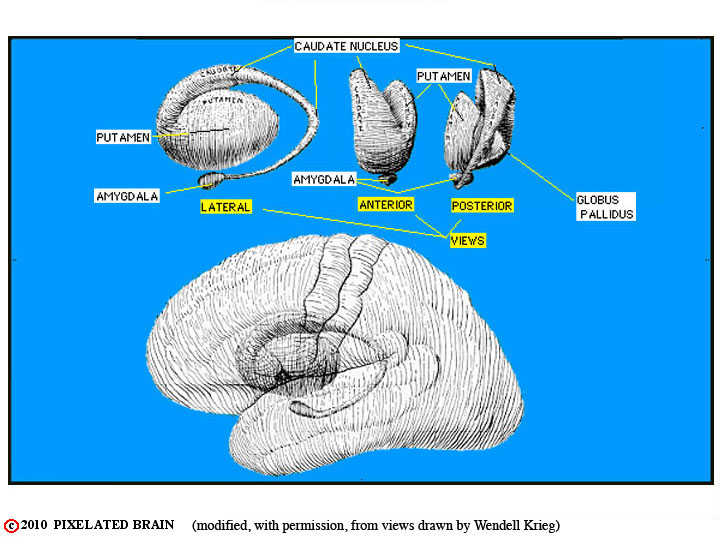
RELATIONSHIP of the AMYGDALA
to the other DEEP NUCLEI
of the CEREBRAL HEMISPHERE
First of all you will remember that you have heard about the amygdala before. It's one of those nuclei buried within the cerebral hemisphere. From a phylogenetic point of view, the amygdala is by far the oldest of these nuclei. Its function is quite different from that of the caudate and putamen - it has nothing to do with the control of movement - and so it doesn't belong to the same "club".

THE LIMBIC SYSTEM
a LATERAL VIEW
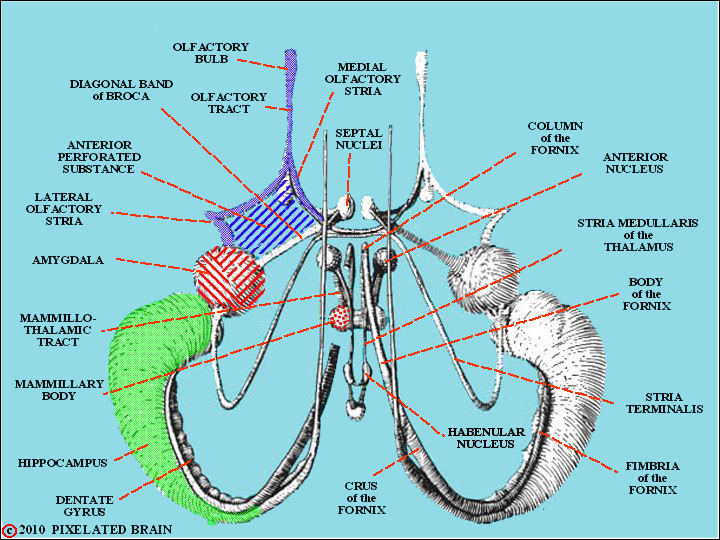
THE LIMBIC SYSTEM
a VIEW from "above"
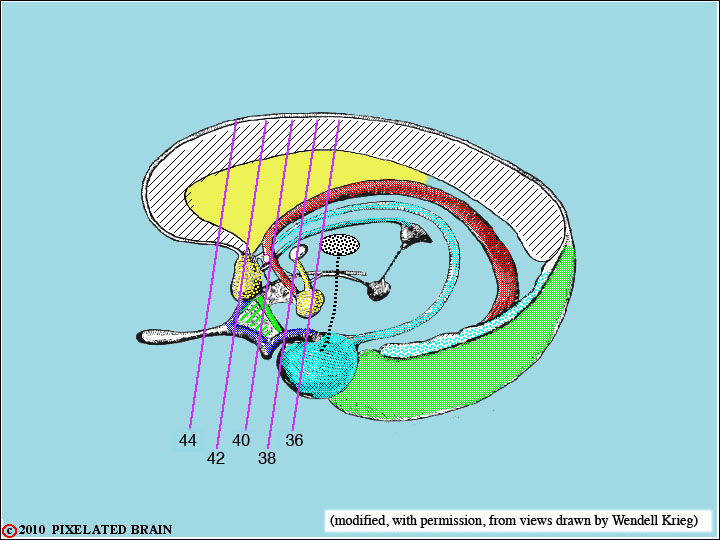
THE LIMBIC SYSTEM
plane of SECTIONS on a
LATERAL VIEW of the BRAIN
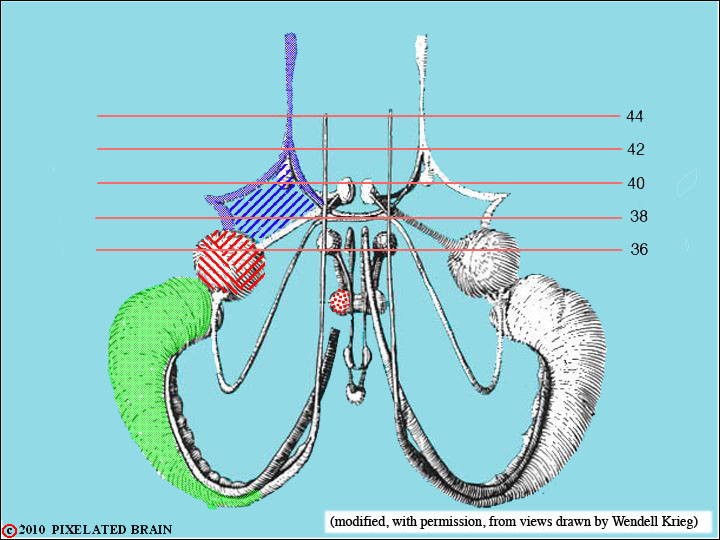
THE LIMBIC SYSTEM
plane of SECTIONS on a
VIEW of the BRAIN "FROM ABOVE"
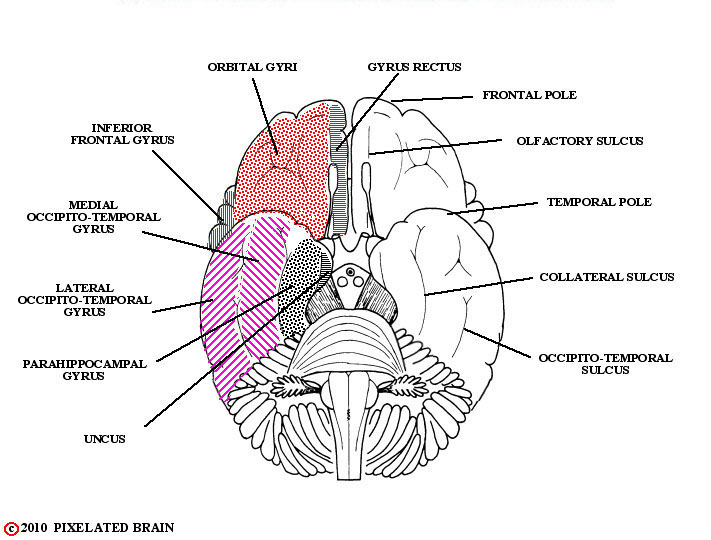
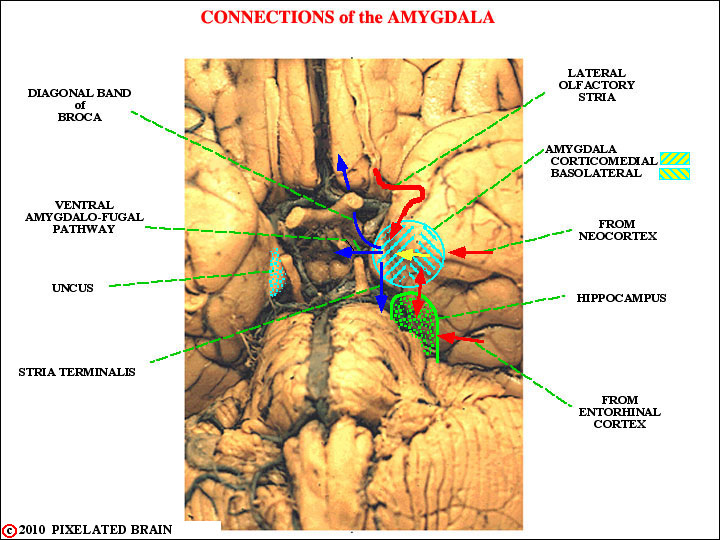
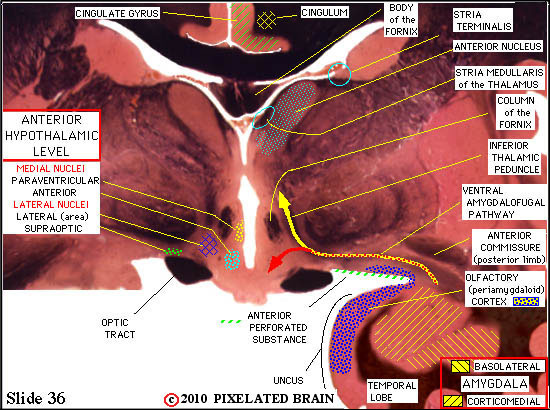
THE AMYGDALA on SLIDE 36
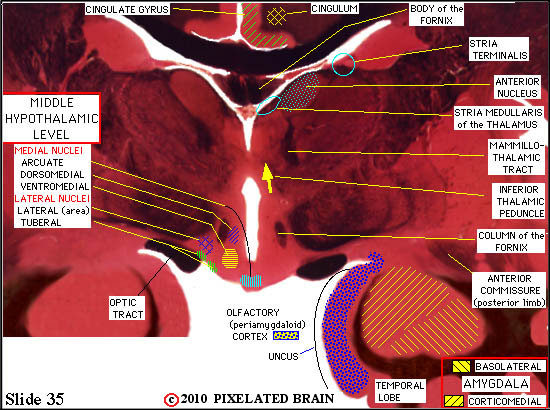
THE AMYGDALA on SLIDE 35
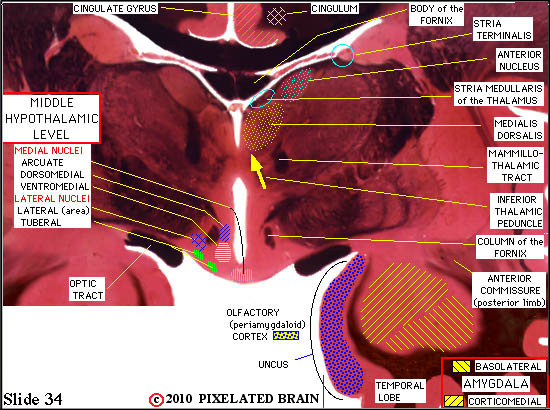
THE AMYGDALA on SLIDE 34
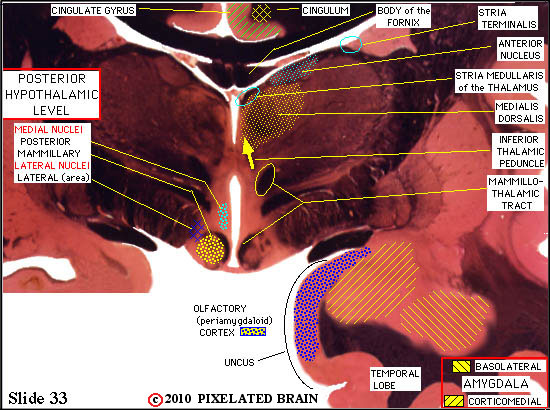
THE AMYGDALA on SLIDE 33
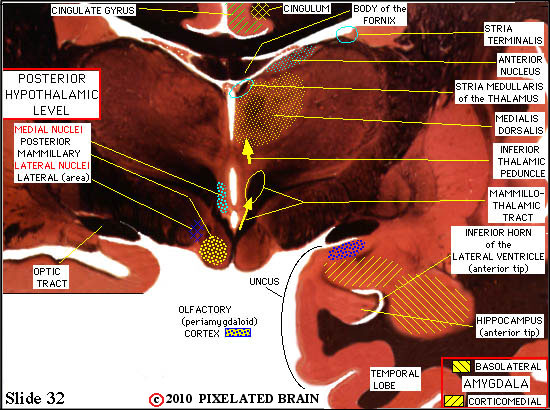
THE AMYGDALA on SLIDE 32
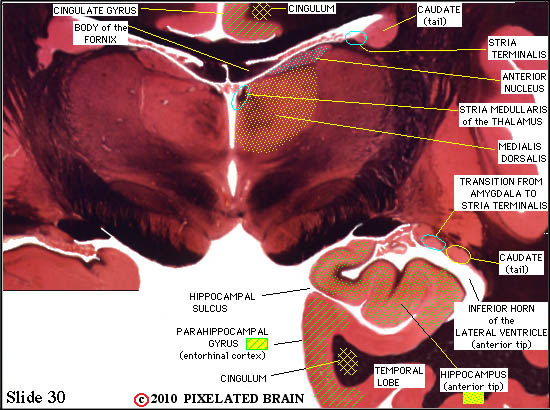
THE AMYGDALA on SLIDE 31
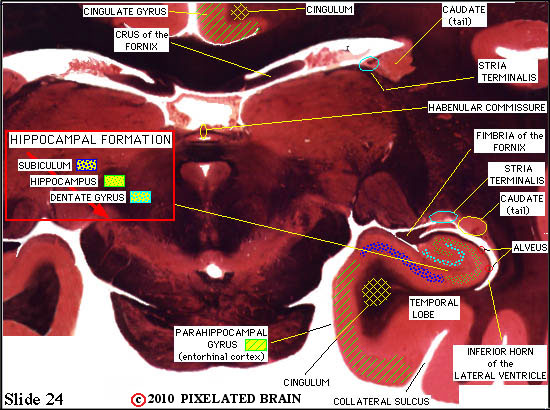
THE AMYGDALA on SLIDE 24
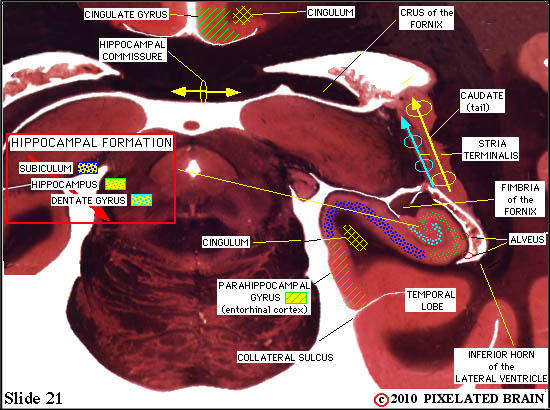
THE AMYGDALA on SLIDE 21
The stria terminalis is cut tangentially as it moves dorsally, always lying just medial to the tail of the caudate.